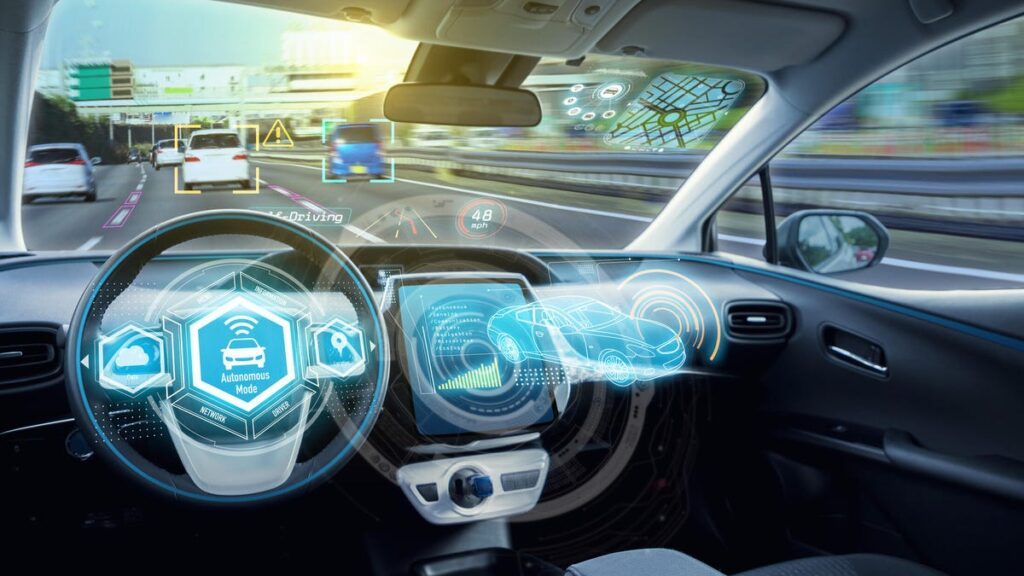Active driving assistance systems seem like a convenient way to get from point A to point B. But you can’t fully trust them yet, according to the American Automobile Association’s latest study released Thursday.
AAA’s automotive engineers put five cars with Active Driving Assistance systems to the test. The systems, also known as Traffic Jam Assistance, were used to navigate heavy traffic. The study found a dangerous datapoint: “notable events” (like people cutting into your lane) where the ADA system failed to adequately deal with driving conditions happened every 3.2 miles, or every 9 minutes on average.
Here’s what to know about the study, and what AAA recommends before you use your car’s ADA system again.
AAA’s tests warn us not to fully trust ADA systems
Hands-on systems require you to keep your hands on the steering wheel while the system is in use. Meanwhile, hands-off systems let you take your hands off the steering wheel in most situations.
AAA’s engineers found two common “notable events” that ADA systems failed to deal with: when people cut in front of the vehicle, which required the researcher to intervene 90% of the time; and poor lane centering, where the system’s sensors and cameras failed to stay centered instead of drifting into other lanes.
“Most common ADAS technology today amounts to smarter versions of cruise control and lane keeping assistance. There’s a reason why these systems are known as ‘advanced driver assistance’ technologies: their purpose is to assist the driver, not to replace them,” says CNET senior reporter and expert on EVs and autonomous vehicles Antuan Goodwin.
AAA found that drivers of hands-on ADA systems had to intervene three times more often than those of hands-off systems. Hands-off system drivers had to reengage every 5.5 miles or every 15.3 minutes.
“Most ADAS systems that I’ve tested over the last decade, even the most recent, require the driver to remain engaged and alert and are not a replacement for human decision making,” Goodwin says. “Even the hands-off highway assist systems like GM’s Super Cruise, Ford Blue Cruise, Mercedes-Benz Drive Pilot and Tesla’s FSD won’t (or shouldn’t) function without driver engagement.”
Should you use your car’s driving assistance system?
The bottom line is that ADA systems aren’t quite ready to replace human hands-on driving and attention yet.
“Even though ADA systems can help out in certain driving situations, they’re not a replacement for paying attention behind the wheel,” said Greg Brannon, director of automotive engineering research, in AAA’s statement. “What we’ve found is that drivers really need to stay alert and cut down on distractions, especially when things get busy on the road.”
Even if your ADA system seems flawless, AAA recommends being prepared to intervene and staying engaged while on the road. It’s also best to read your ADA system’s manual to understand when and how to use it.
Goodwin points to Tesla, which continues finding itself in hot water over how it markets “Autopilot” and “Full Self Driving,” since they are not fully autonomous driving systems. This “creates a disconnect between the actual capabilities of the car/technology and customer expectations,” Goodwin says.
Tesla was earlier this month found partly liable for a fatal crash where a driver was using its Autopilot software when they collided with another car, and was ordered to pay $243 million in damages.
And in California, Tesla is currently in the courts for another case involving Autopilot, where the state DMV is suing for allegations of false advertising and misleading customers. The California DMV alleges that Tesla is misrepresenting the capabilities of its advanced driver assistance systems by naming them “Full Self-Driving” and “Autopilot,” and is seeking a 30-day suspension of Tesla’s license to sell vehicles in the state.

